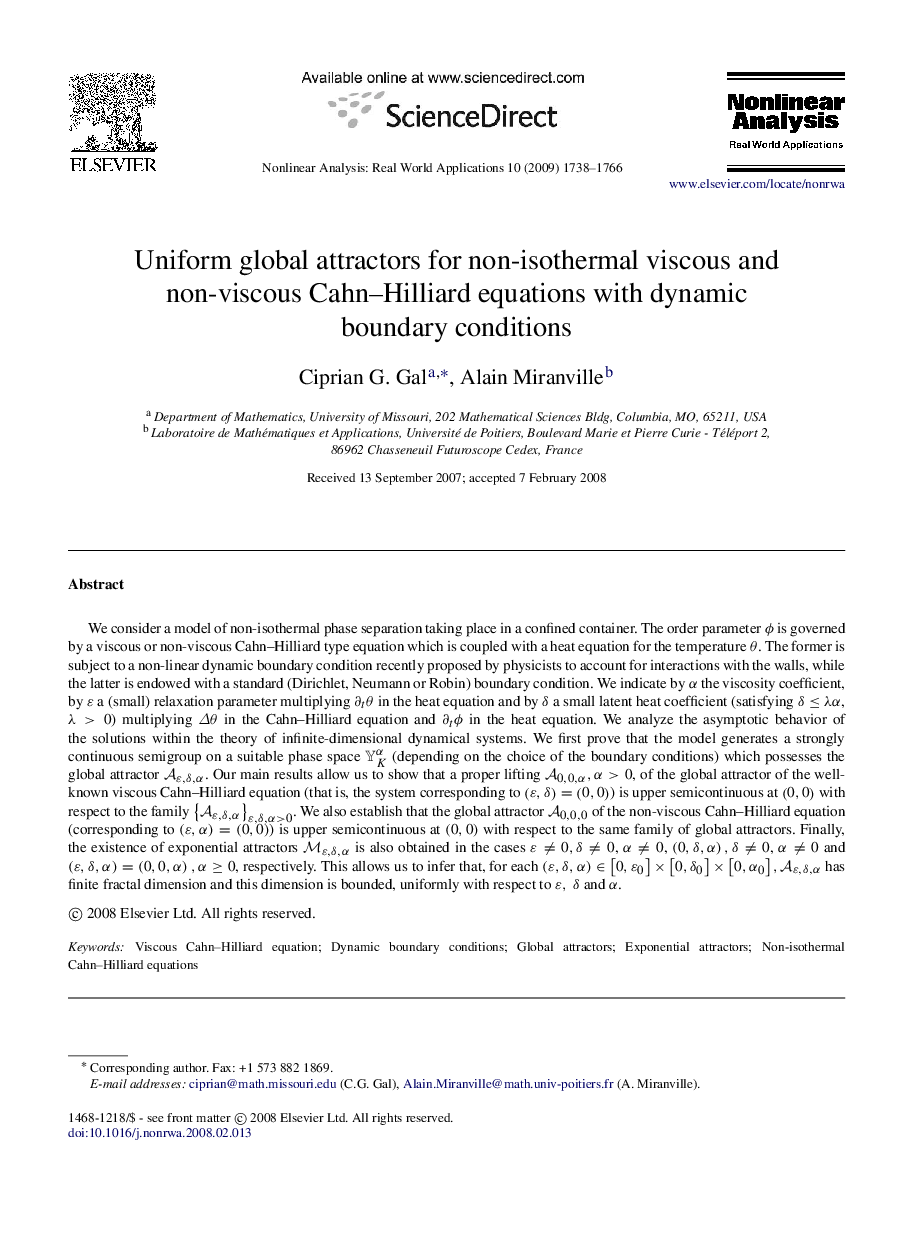| کد مقاله | کد نشریه | سال انتشار | مقاله انگلیسی | نسخه تمام متن |
|---|---|---|---|---|
| 838962 | 908377 | 2009 | 29 صفحه PDF | دانلود رایگان |

We consider a model of non-isothermal phase separation taking place in a confined container. The order parameter ϕϕ is governed by a viscous or non-viscous Cahn–Hilliard type equation which is coupled with a heat equation for the temperature θθ. The former is subject to a non-linear dynamic boundary condition recently proposed by physicists to account for interactions with the walls, while the latter is endowed with a standard (Dirichlet, Neumann or Robin) boundary condition. We indicate by αα the viscosity coefficient, by εε a (small) relaxation parameter multiplying ∂tθ∂tθ in the heat equation and by δδ a small latent heat coefficient (satisfying δ≤λαδ≤λα, λ>0λ>0) multiplying ΔθΔθ in the Cahn–Hilliard equation and ∂tϕ∂tϕ in the heat equation. We analyze the asymptotic behavior of the solutions within the theory of infinite-dimensional dynamical systems. We first prove that the model generates a strongly continuous semigroup on a suitable phase space YKα (depending on the choice of the boundary conditions) which possesses the global attractor Aε,δ,αAε,δ,α. Our main results allow us to show that a proper lifting A0,0,α,α>0A0,0,α,α>0, of the global attractor of the well-known viscous Cahn–Hilliard equation (that is, the system corresponding to (ε,δ)=(0,0)(ε,δ)=(0,0)) is upper semicontinuous at (0,0)(0,0) with respect to the family {Aε,δ,α}ε,δ,α>0{Aε,δ,α}ε,δ,α>0. We also establish that the global attractor A0,0,0A0,0,0 of the non-viscous Cahn–Hilliard equation (corresponding to (ε,α)=(0,0)(ε,α)=(0,0)) is upper semicontinuous at (0,0)(0,0) with respect to the same family of global attractors. Finally, the existence of exponential attractors Mε,δ,αMε,δ,α is also obtained in the cases ε≠0,δ≠0ε≠0,δ≠0, α≠0α≠0, (0,δ,α),δ≠0(0,δ,α),δ≠0, α≠0α≠0 and (ε,δ,α)=(0,0,α),α≥0(ε,δ,α)=(0,0,α),α≥0, respectively. This allows us to infer that, for each (ε,δ,α)∈[0,ε0]×[0,δ0]×[0,α0],Aε,δ,α(ε,δ,α)∈[0,ε0]×[0,δ0]×[0,α0],Aε,δ,α has finite fractal dimension and this dimension is bounded, uniformly with respect to ε,δ and αα.
Journal: Nonlinear Analysis: Real World Applications - Volume 10, Issue 3, June 2009, Pages 1738–1766